Includes per person per stay:
- Overnight accommodation
- Breakfast
- 2-course menu
- Irish coffee in Bull
- Christmas tree
Green Key approved
4.20140514538495 of 5 Stars

Includes per person per stay:
Click the "See calendar and prices" button to choose dates and see the room selection.
See calendar and prices: Christmas StayHavnepladsen 1, 9900 Frederikshavn
Show map
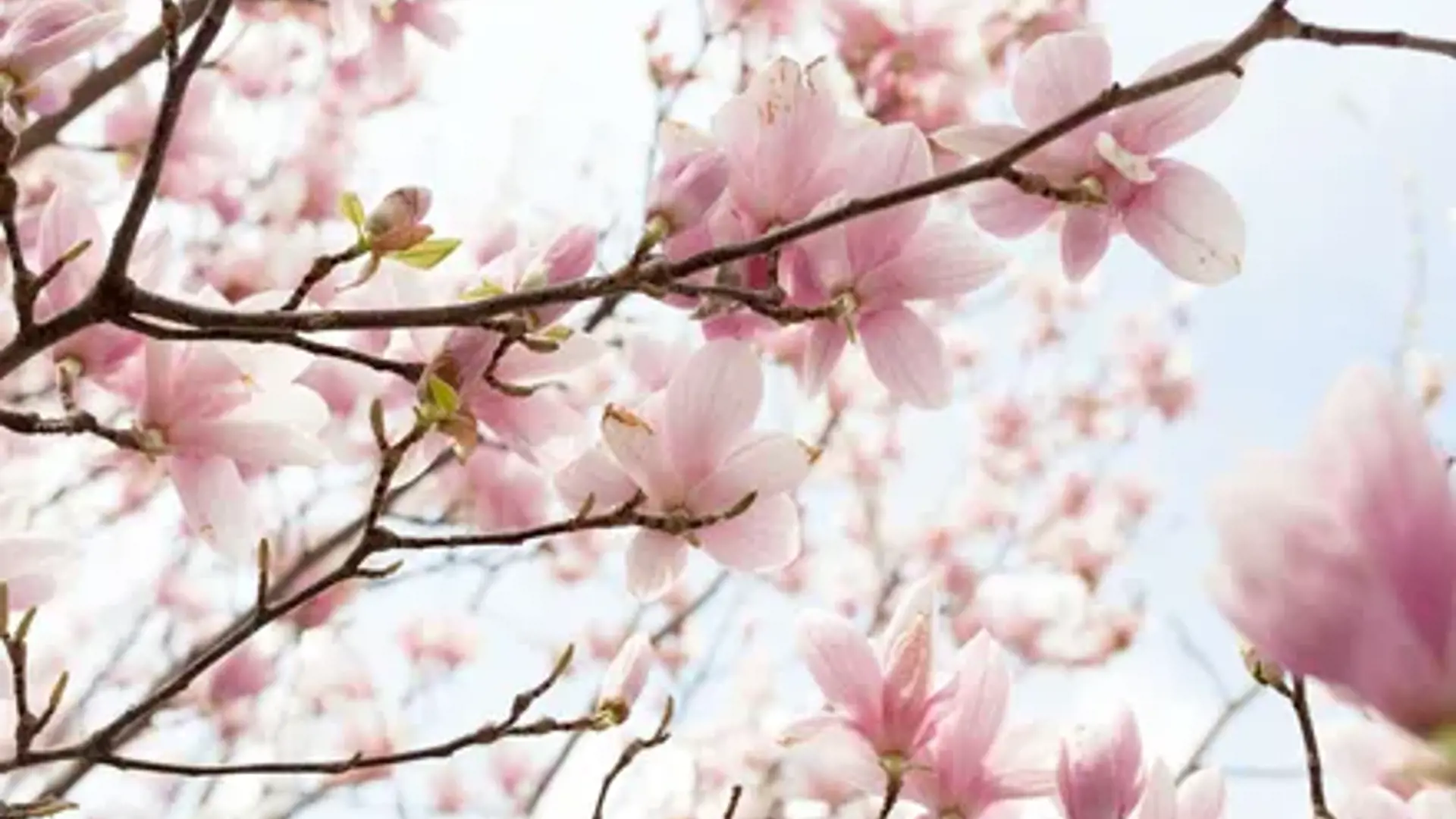
Arrival 01.06 - 07.07 and 20/7 - 31.08.24
Includes per person per stay:
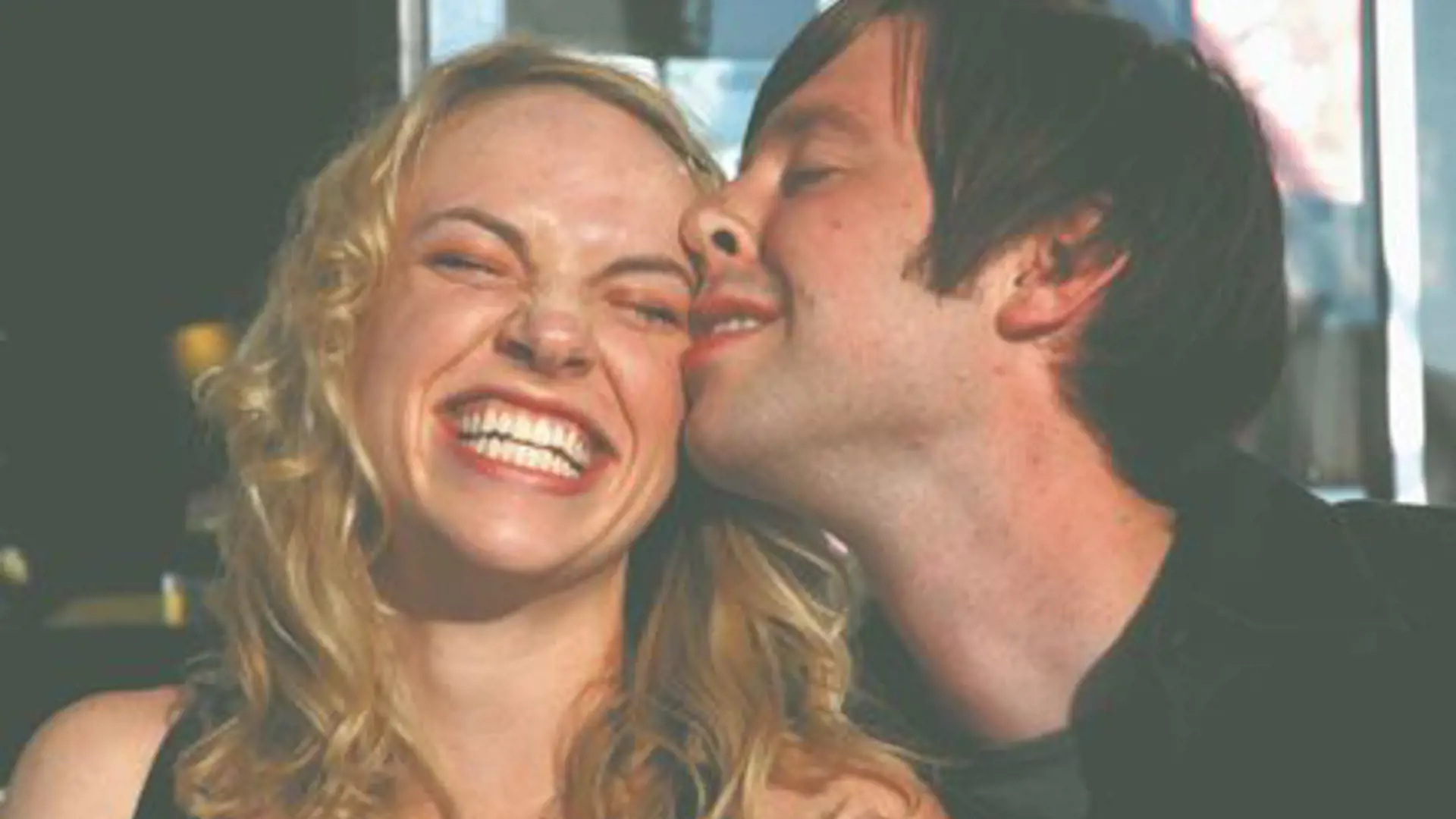
Minimum 3 days / 2 nights
Includes per person per night:
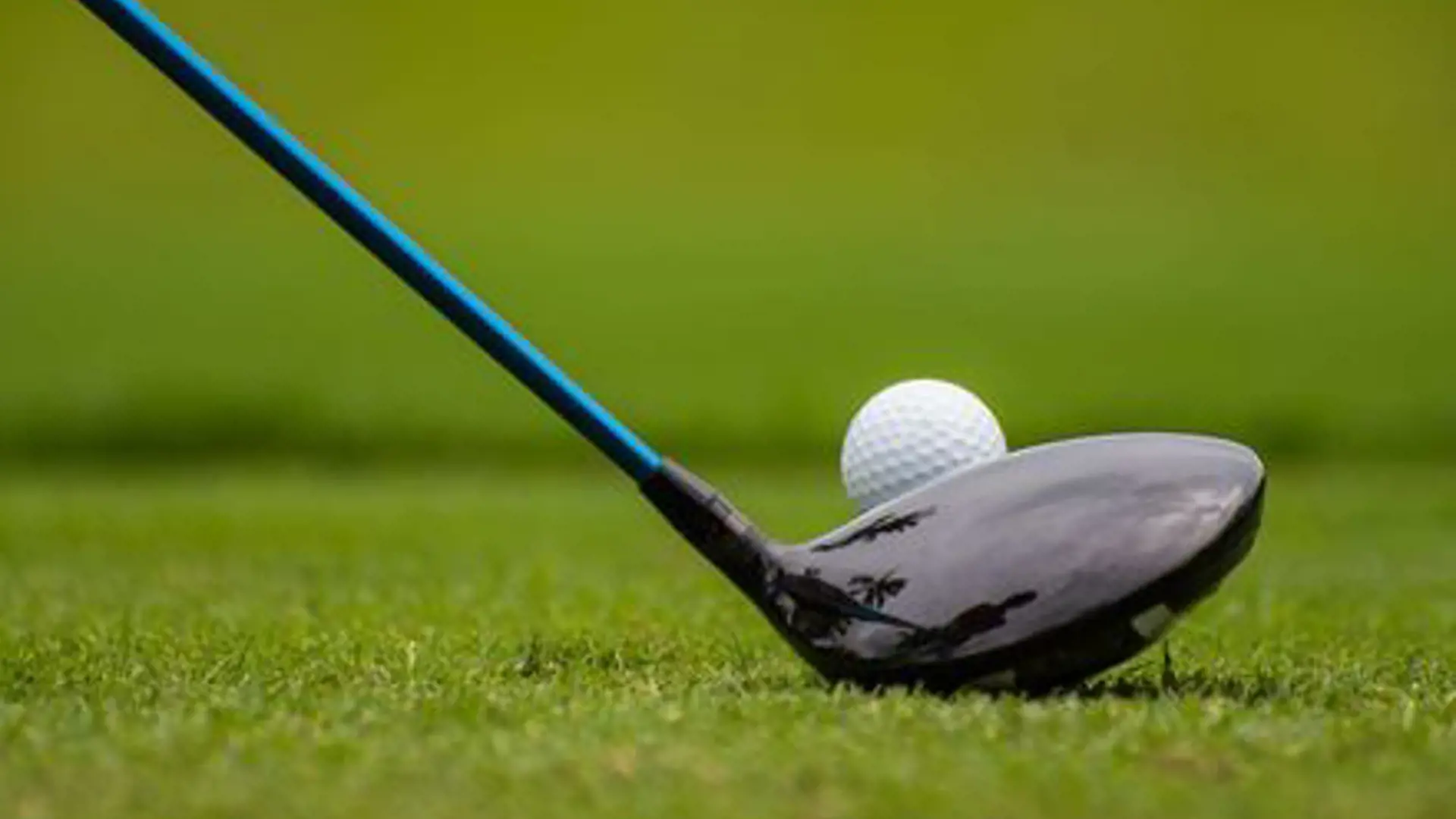
Arrival from 01.03.-01.09
Includes per person per night:
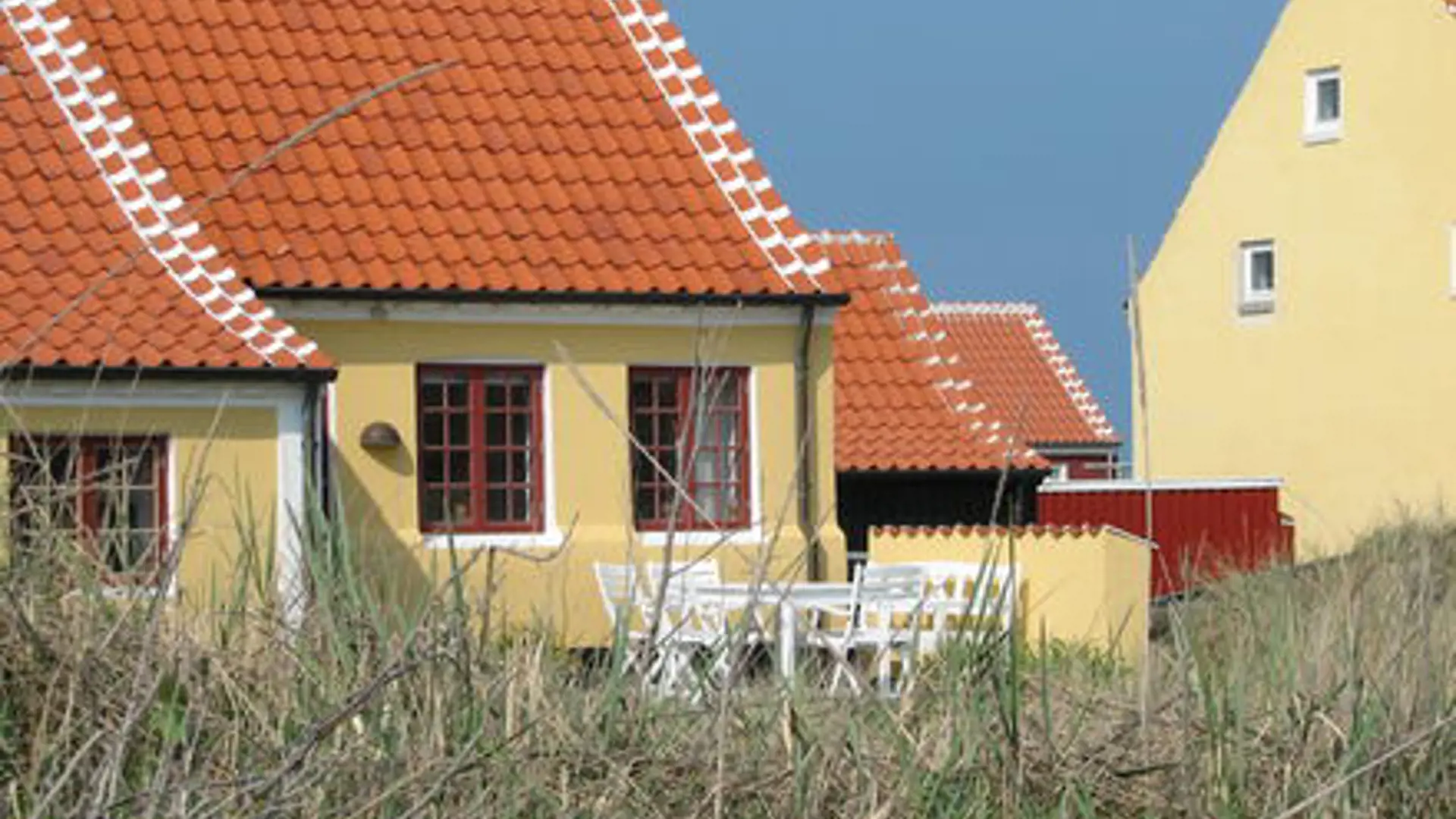
Arrival 13.01.–13.04.23 & 19.04-30.06.23 & 01.09-22.12.23
Includes per person per stay:
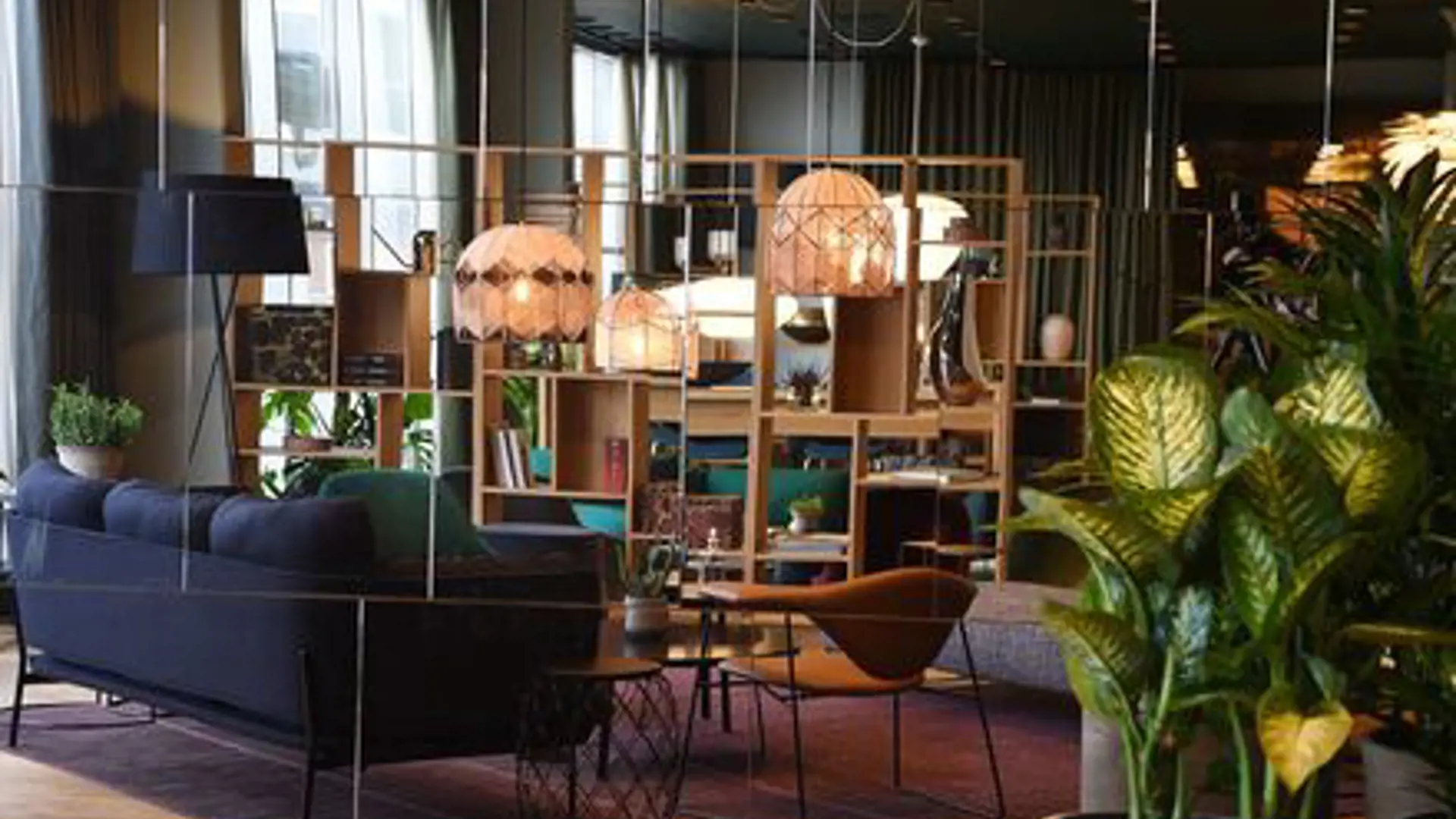
Includes per person per night:
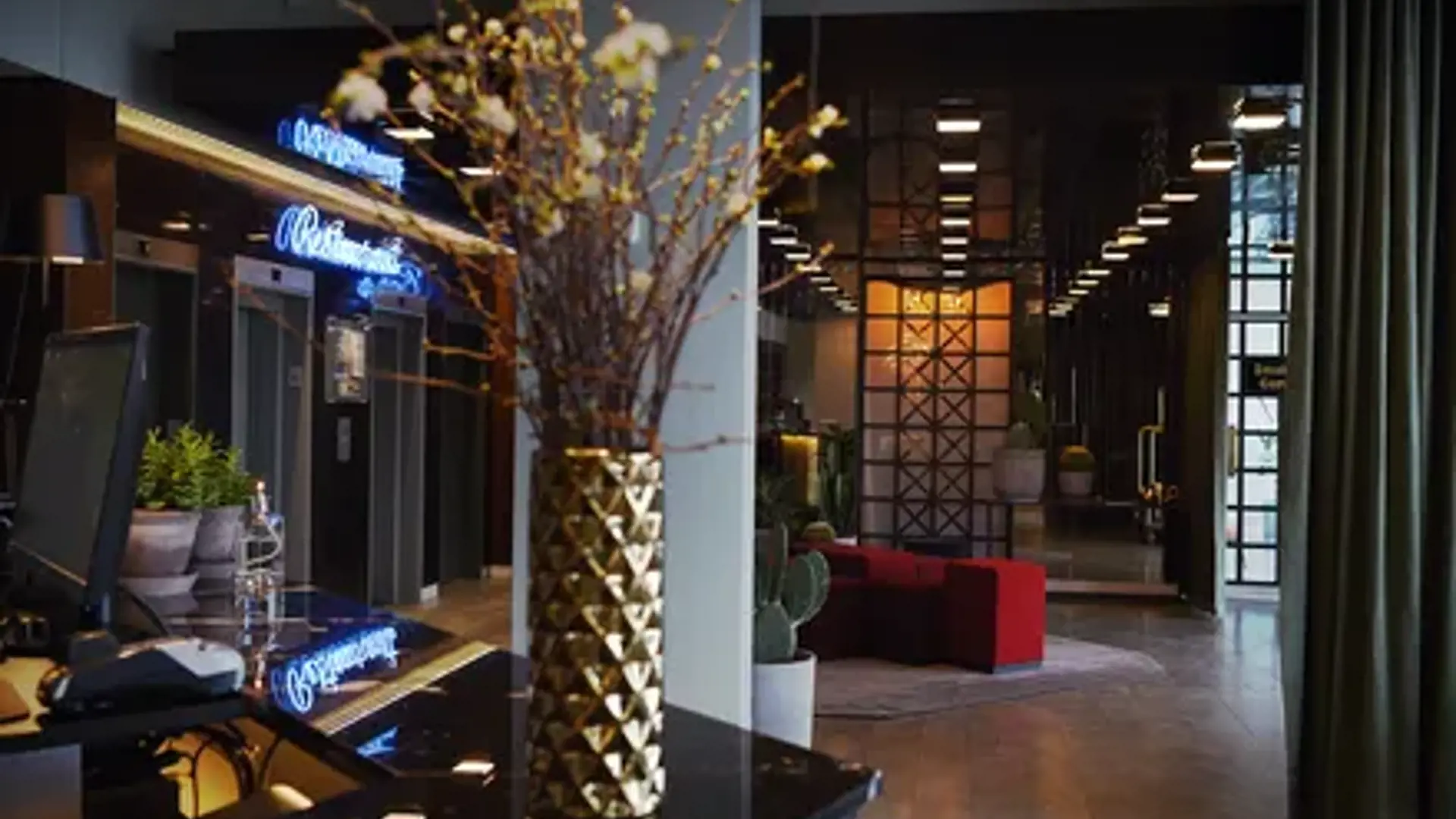
Minimum 3 days/ 2 nights
Includes pr. person pr. night:
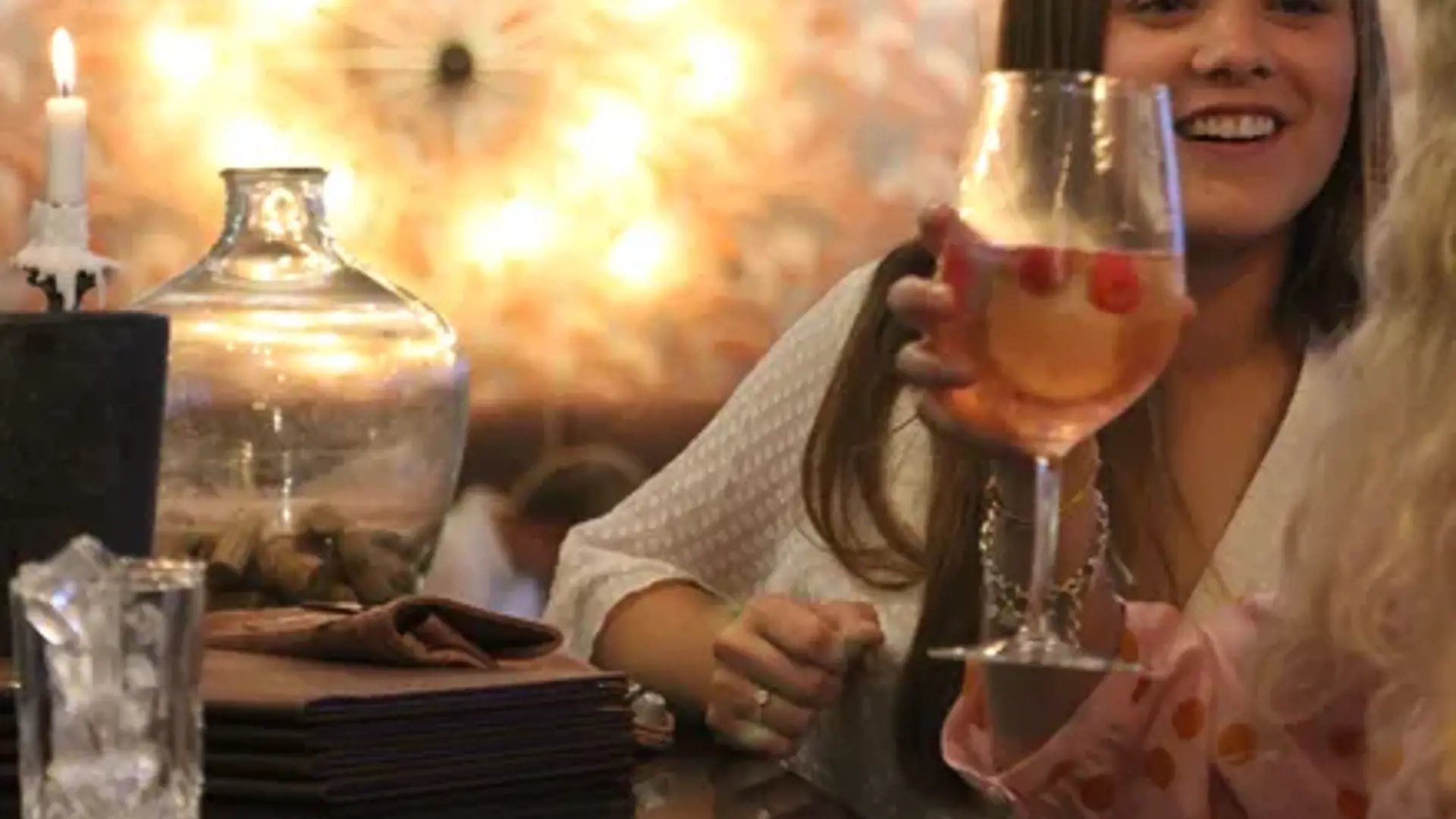
Includes per person per night:
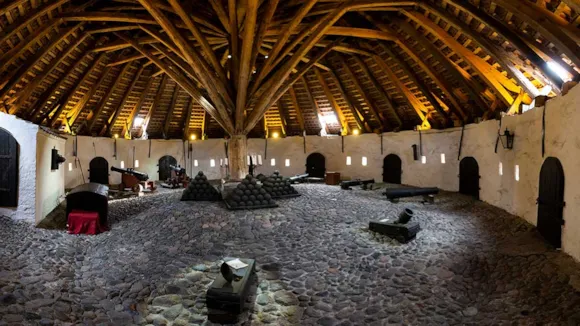
0.37 km
Martello tower built in 1686-1690. The top floor (cannon deck) houses a range of artillery.
The lower floors have exhibitions of the history of Fladstrand and the harbour.
Citadel Fladstrand was used as a base by the Danish Navy during the Great Northern War (1709-20) and the war against Great Britain (1807-14).
In the Powder Tower you are welcomed by historically dressed staff who can tell about the history of the Powder Tower, the relocation in the 70s as well as the maritime history of the harbor, the fleet, Tordenskiold and Fladstrand (today Frederikshavn).
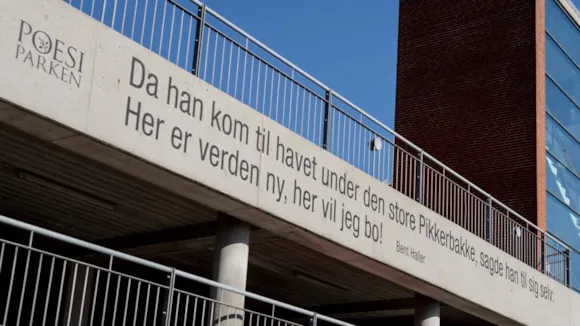
0.46 km
The poetry park in Frederikshavn is poetry, verses and quotes around Frederikshavn.
You can see it on gables, on buildings, on stairs, on the tiles in the pedestrian zone and many other places.
We are talking about culture at eye level - poetry in Frederikshavn.
The poetry park is dynamic and grows through dialogue with the city's citizens and sponsors.
The poetry park creates joy and evokes smiles on the lips.
The works create disturbances in the urban space - and make you stop - and set thoughts in motion.
The poetry park is mainly concentrated in the center of Frederikshavn, but you can also see the work "Proud of my city" at the foot of Pikkerbakken by Møllehuset in scenic Bangsbo.
Have a very nice trip.
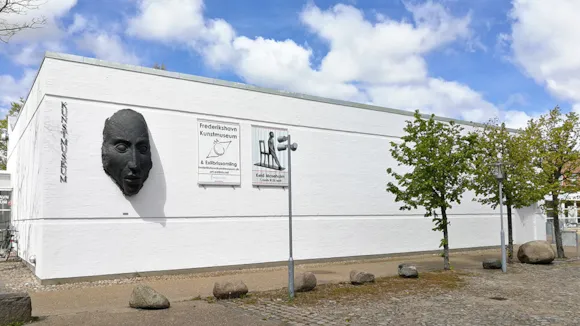
0.6 km
Frederikshavn Kunstmuseum & Exlibrissamling has the largest collection of Karl Bovin, one of Denmark's greatest landscape painters, as well as other local artist, like Eyvind Karup Nielsen, Erik Skjoldborg, Poul Sørensen. The museum shows annual 6-8 exhibitions of Danish and international contemporary art.
In addition, the museum is one of the few European and Scandinavia's only museum of bookplate art. The museum houses one of the world's largest collection of bookplates. The collection comprises about 250,000 original bookplates, including bookplates from many royal houses.

2.56 km
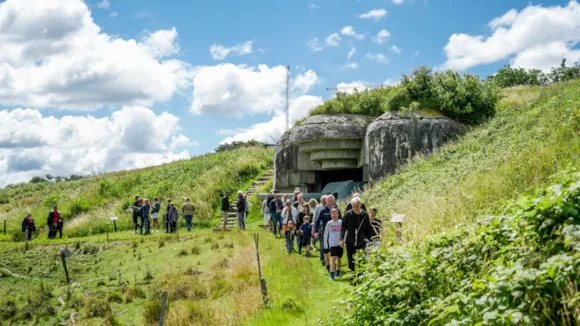
3.6 km
The fort was builded by the Germans under second world war og was in 1944 armed with fire 15 cm cannons from the cruiser Niels Juel. In total there was constructed 69 concrete installations on the fort – large and small.
Frederikshavn has often played a significant role regarding wars throughout history and Pikkerbakker was almost hollowed out during the second world war.
It is possible to visit the exhibition bunkers and experience interactive communication. The facilities feature a cinema, traditional museum communication and interactive communication.
From the fort there is a splendid view over Frederikshavn and Kattegat. When the weather is clear, you can see both Skagen and Læsø.
Presentation in English
At Bangsbo Fort, signs and displays are presented in English across the museum. Brochures and written information are also available and guided tours can be arranged to accomodate English speaking guests.
Travel sustainably with bus and train in North Jutland
Getting around North Jutland with public transport is effortless. Plan you trip with bus, train or ‘Plustur’ on rejseplanen.dk.

2.83 km
The museum resides over several exhibitions including the invasion of Denmark and world war 2, marine archeology and a maritime exhibit.
In the manor house, which is surrounded by a moat, visitors can experience the town history, textile exhibits and a one of a kind collection of jewellery made of human hair.
In the stables, an unique ship from Ellingå - dated 1163 - is on display together with a maritime exhibit with figure heads and model ships, an exhibit about the resistance movement in Jutland during the German occupation of Denmark in 1940-45, and - in the 16th century barn - a large collection of horse-drawn carriages.
In connection with the museum lies Bangsbo Botanical Gardens, a herb garden and a deer park with a playground made from nature materials.
At Kystmuseet Bangsbo, brochures and written information are available in English. Signs and displays are partly in English and also guided tours can be arranged to accomodate English speaking guests.
Getting around North Jutland with public transport is effortless. Plan you trip with bus, train or ‘Plustur’ on rejseplanen.dk.
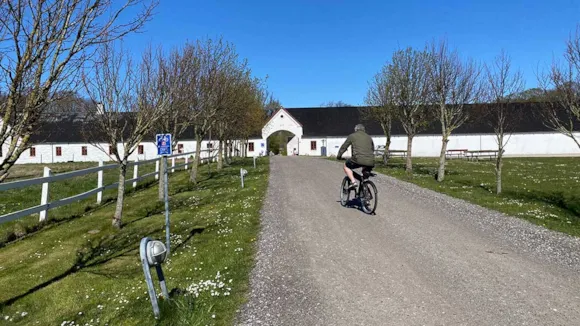
3.66 km
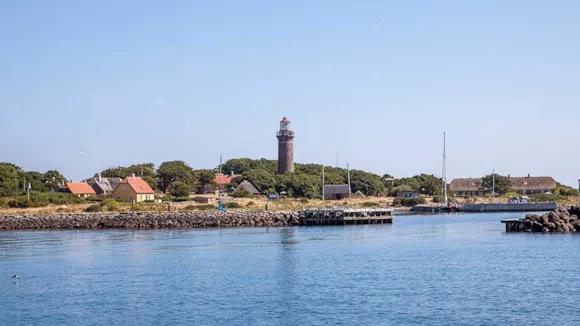
7.46 km
The islands lie about 7 km north east of Frederikshavn in shallow water between Napstjert in the north and Bangsbo in the south. They were formed by blue clay and sand deposited on reefs formed in the Ice Age. The islands consist of Hirsholm and Græsholm with several islets and reefs.
The islands are a paradise for birds, protected by law since 1929. Outside Hirsholm, all traffic is forbidden. In addition to the rare species, there are colonies of seagulls on the islands, which are also used as resting-places by migrant birds.
The inhabitants.
Potsherds and flint stones are proof that the islands were inhabited in prehistoric time. The maximum population of 225 was reached in the 1870's. Until 1583 the islands were Crown property, then followed a number of different noble owners. In 1884 the islands were bought by the Danish Navy and are now owned by the Ministry of Defence.
The church and school.
The church dates from 1641. Before this, the locals had to use the church in Elling on the mainland. Cases of children dying before baptism, and bodies waiting for up to five weeks before burial, resulted in a living being established on the island.
Nobleman Otto Skeel built an oak half-timbered church. This was later bricked and the porch added. The islands are now part of the Parish of Frederikshavn and a few services take place each year.The first school was started in 1641, but in 1970 the islands became part of the city of Frederikshavn and the school was closed.
Trade.
From the 17th to 19th century, fishing was the main occupation. Ship-piloting, once a source of income, was discontinued in 1916, partly due to the opening of the Kiel Canal. Ship wrecks have also given extra income, and smuggling was not entirely unknown. The lighthouse and mail boat also gave employment. The 1883 lighthouse is part of the home of the lighthouse keeper, now the island's supreme authority.
From 1760 to 1909 the island had a combined inn and general store, the only shop the island has seen. The mail boat started in 1782 and there are now three weekly sailings from Frederikshavn.
Dogs and cats are not allowed !
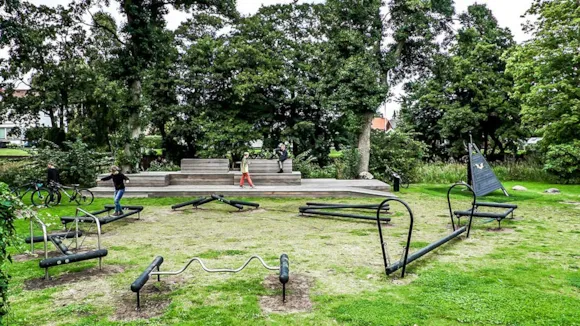
11.37 km
Sæby Å is one of the best areas for water bat. This is because there are many old and hollow trees close to the water, so the bats have the best conditions for finding both food and shelter.
There are 17 species of bats in Denmark, and you can find 4 of the species at Sæby Å: Water Bats, Dwarf Bats, South Bats and North Bats.
Here at Sæby Å, Frederikshavn Municipality has now established a dissemination platform where you can experience and learn more about bats as well as listen to them with an audio binoculars that translate their screams into sounds that the human ear can also hear. There are also several interactive buttons you can press and get more knowledge about bats in both Danish and English.
The place is a green oasis where you can relax and enjoy the beautiful views during the day and in the evening watch the bats chase insects along the water in the river.
The best season to see bats is from April to September, and most optimally at dusk.
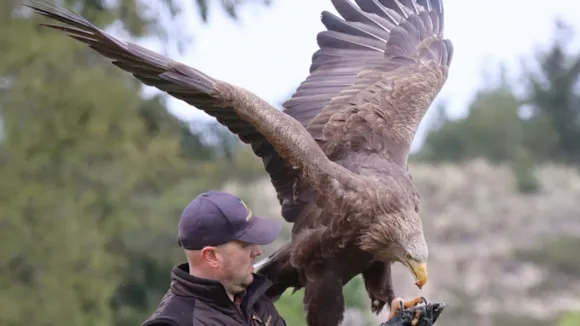
22.87 km
An attraction of world class and an experience for a lifetime!
In the Eagle Reserve's unique shows, you not only get the opportunity to experience and learn about the earliest relation in man's relationship with birds of prey; we make sure to take you on a journey from the Viking Age up through history with classic falconry and right up to today's technological development.
Our shows are always held outdoors on the stands that surround the lake of the Eagle Reserve, from which you have a view of the magnificent terrain as a background. With this, the stage is set for the audience to experience the birds of prey displaying their fantastic flying abilities in beautiful natural surroundings and the free and fresh air, here at Skagen.
During the performance, which lasts approx. 1 hour, you not only get a thorough introduction to both the world and Danish history of falconry as well as its use in the present, but also an insight into the biology of wild birds of prey. Our skilled presenters contribute with an interesting lecture alongside presenting the birds in their own way. So there is not only the rush of wings to feel here at the Eagle Reserve, but also a lot to learn.
At Ørnereservatet, they are proud not only to be able to show off our birds of prey from the ground - they always give the audience a completely unique experience that cannot be found anywhere else in the world. You get the opportunity to experience the birds up close when our falconers let them wander among the audience in the stands - You see the falcons being trained from the ground and in the difficult and classic discipline from horseback - You experience the eagles' acrobatics in the air above the display area and flying in interaction with horse and rider, and as something completely unique and modern, you can witness a genuine eagle car chase.
In the show, you will meet a large number of different species of birds of prey. In addition to the beautiful horses and the racing car, you see three lightning-fast falcon species, four different eagle species, the mythical Lamb's vulture and during the season there are also novelties, both four-legged and winged.
Video:https://youtu.be/Og96XAYoN7M
Webside: www.eagleworld.dk
Facebook: https://www.facebook.com/eagleworld9881
Instagram: https://www.instagram.com/eagleworlddk/
For more information about opening hours and price, go to this link.
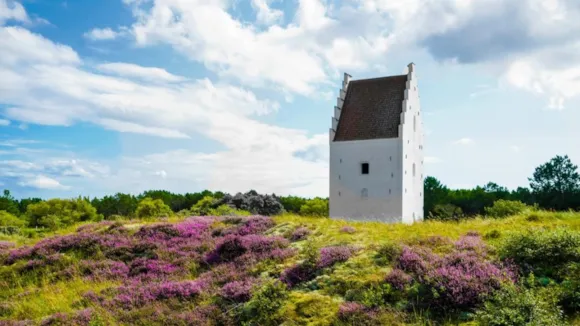
30.83 km
In the dunes west of Skagen stands the tower of the old Sct. Laurentius Church, today known as ‘The Sand buried Church’. For four hundred years it gathered the congregation, until drifting sand started to block the road and cemetery, and in 1795 the congregation were forced to cease worship, and the church was closed.
Sct. Laurentius was a magnificent church with impressive furnishings, of which now only the altar's two heavy candlesticks remain. They stand on the altar of the 'new' church, Skagen church. Beneath the surface there is still remnants of the church's foundation and floor, as well as a baptismal font that was not - like the rest of the furniture - removed and sold.
Recent studies around the 200th anniversary of the church's closure have helped mark the church's floor plan, including the location of the nave and sacristy, which can be seen behind the tower. Red poles mark the ground plan, while fascines mark the known parts of the old cemetery wall. Many questions are still unanswered, which probably is part of the fascination of the church.
Laurentius (Saint Lawrence) is the patron saint of this and many other west Danish churches. He was the protector of the sailors and the poor and suffered martyrdom on a gridiron. The gridiron can be found in Skagen city coat of arms together with the words " Vort håb til Gud alene/ Our hope to God alone"
In the summer Skagen Church arranges outdoor service every Thursday evening at 19.30 from mid-June to mid-August at the Sanded Church with wind music.
400 m from the sand buried church there is a parking lot with a playground, tables, benches and toilets - and during the summer you will find a kiosk, from which tickets are sold to get into the church tower.
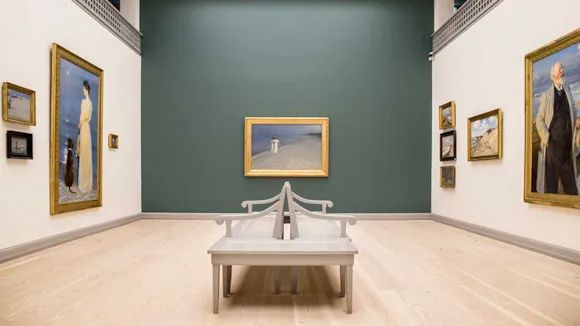
32.21 km
Today Skagen’s Museum contains around 1900 sculptures, drawings and paintings mainly made by artists who visited Skagen in the period from 1870-1930. Although you might not be particularly interested in art, you should not miss a visit to this museum, when you are in Skagen. Not only will you find world-class art, but also the atmosphere of Skagen, which has made it the city it is today. Read below about the history of the museum, about the painters of Skagen and get a virtual tour thanks to the Google Art Project.
Skagen’s Museum was founded in the dining hall of Brøndums Hotel in 1908 by the painters Ancher, Krøyer and Tuxen along with hotel owner, Degn Brøndum and pharmacist Victor Christian Emanuel Klæbel. The purpose was to exhibit the works of the Skagen painters and raise funds for the construction of a museum. At first, the technical college was used for exhibitions, but after the painter, Krøyer died in 1909, his residence was put to use. In 1919, Degn Brøndum donated the old garden of his hotel to the museum. The construction of the museum began in 1926 from blueprints by the architect Ulrik Plesner. The opening of the museum took place on the 22nd of September 1928 with a collection of around 325 works - many which had been donated by the artists themselves.
The museum in Skagen was expanded several times as a result of the great interest for the painters of Skagen. In 1930, Plesner drew a suggestion for an expansion, but it wasn’t until 1982 that they became a reality. Since then expansions to the museum have followed in 1989, 2004 and in 2014 renovations and expansions started once again.
“Skagensmalerne” is the name of the artist colony, who settled in Skagen in the 1870s to portray the life in Skagen, the rough living conditions of the fishermen and the grand nature with the special light, which makes both Skagen and North Jutland a popular destination. The painters brought their brushes and easel into the nature and painted what they saw. The style, also called realism, influenced all of Europe in this period and has helped with the steady flow of artists, which is why we today speak of the painters of Skagen as an artist colony.
Among the most known painters from Skagen is P. S. Krøyer, who painted the world famous “Hip Hup Hurra” painting for a birthday in Skagen, Anna & Michael Ancher, Laurids Tuxen, Christian Krohg and Holger Drachmann.
Skagens Kunstmuseer provide brochures and written information in English, and around the museum signs and displays are partly in English. Also, guided tours can be arranged to accomodate English speaking guests.
Google has made it possible to visit the museum online through the Art Project. However, we do recommend the physical experience. Visit Skagen's Museum with the Google Art Project
Getting around North Jutland with public transport is effortless. Plan you trip with bus, train or ‘Plustur’ on rejseplanen.dk.